Last November, nearly a year ago now, a large number of us gathered at the Garrison Institute in Garrison, NY to participate in Cynthia Bourgeault’s retreat on Centering Prayer and Nondual Consciousness, “From Narrative Self to Witnessing Self: Crossing the Threshold.” It happened to fall the same weekend that Fr. Thomas Keating’s memorial service was live-streamed, and several of us gathered that Saturday afternoon to watch and join in the energy of that event. Out of that gathering was born the seed of the idea that became the interspiritual celebration of Thomas’ life this past July. At the same time, Laura Ruth and I left the Garrison weekend feeling that Cynthia—or the weekend itself—had commissioned us to step up our game in engaging the fourth point of Northeast Wisdom’s Mission Statement:
ENGAGE with the other great sacred Wisdom traditions of humankind through interSpiritual dialogue, shared practice, and worship, always cognizant of our deep rootedness in the Christian tradition.
How might we serve NEW in witnessing more fully to the interspiritual edge of our mission? Over the past year, I had been working to integrate my own commitment to Sufism into my public ministry, while my inner life was also astir with energy from a recent trip to India taken in preparation for the contemplative pilgrimage that happened in January; of particular highlight was my growing reacquaintance with the life and teachings of Sri Ramana Maharshi, who I’d first encountered while in India in 2006. Laura and I had dates on the calendar for a Hallelujah Farm retreat the next October, and when she asked me for a topic, these strands suddenly wove themselves together into a program that I had not foreseen.
It was clear from the get-go that we would focus on what contemplative Christian, Sufi, and Advaitic teachings had to tell us about our fundamental humanness, and particularly about the human heart. And so this past month, twenty souls gathered for a long weekend and together tended a seed that over four days germinated into beautiful green life in our hearts, even as the leaves were falling from the trees all around us. How it will continue to grow, God knows!
As the weekend wound down, I realized that I wanted to ask one of the participants to write a reflection on the experience. 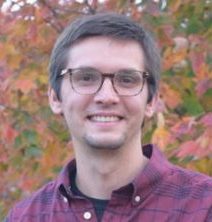 Keith Kristich is 30 years old, and himself an emerging leader in the wider contemplative movement. Grounded in the Contemplative Outreach lineage of Thomas Keating, Keith’s work has a growing interspiritual edge, and I have no doubt we will be hearing much more from him in the years to come!
Keith Kristich is 30 years old, and himself an emerging leader in the wider contemplative movement. Grounded in the Contemplative Outreach lineage of Thomas Keating, Keith’s work has a growing interspiritual edge, and I have no doubt we will be hearing much more from him in the years to come!
What would one of my peers think of the work we’d done over this weekend? I was curious to find out—and deeply heartened when I read Keith’s words. They capture the intention and spirit of our gathering beautifully. I commend them to you here!
Opening the Heart:
A Retreat on Christian, Sufi and Hindu Practice of Heartfulness
by Keith Kristich
I look out at rolling hills with trees holding leaves of fire. It’s autumn, and the heart of fall colors shine forth at Hallelujah Farm in New Hampshire. With leaves of yellow, orange and red—the field looks to be on fire with life.
Twenty or so of us 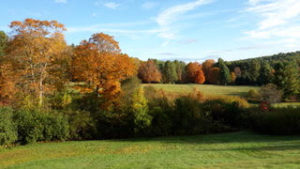 gather for four days of sacred presence by way of Heart practice.
gather for four days of sacred presence by way of Heart practice.
By weaving together the sacred traditions of contemplative Christianity, mystic Islam in Sufism, and the Hindu nondual philosophy of Advaita Vedanta, Matthew Wright and his co-leader, Laura Ruth, seamlessly guided our sacred family into the spiritual heart—home to not only our truest selves, but the divine Presence.
Coming together in community we nourished one another by adding harmony during chant—sometimes deeply harmonious and resonate, and sometimes with dissonance—but always together.
And from chant we would move into deep silence, allowing each person in their own way to open the Heart to the Universal. Though totally personal and unique, we each found our own way into the Cosmic and Universal Body.
Each of us a wave; each wave the ocean.
From the very start we were invited into taking an interspiritual approach in both theory and practice of spirituality. The weekend wasn’t about interfaith—different religious traditions sharing on the conceptual, or social level—but rather about interspirituality, the term coined by Wayne Teasdale in The Mystic Heart.
Interspirituality is a term Teasdale uses to describe when religious practitioners gather and open-heartedly share and receive the gifts of another spiritual practice and tradition. Interspirituality isn’t head knowledge but participatory heart knowledge.
During retreat, we weren’t invited into mere theory or idea, but rather into holding such a radical openness and basic trust that the divine can be experienced in the faith and practice of another tradition.
Maybe I am not a Sufi, but by practicing sacred dance in a zhikr ceremony while chanting “La ilaha illallah” (meaning “There is no God but God” or alternatively, “There is only God”), I, among others, was able to touch and be touched by the divine in the Heart. It mattered not whether one “identified” as a Sufi—no, what mattered here was the cultivation of a radical openness and willingness for the immediacy of the divine in the heart.
For those moments, the Sufi zhikr (Arabic for “remembrance”) was an opportunity for this radical openness.
Opening the Heart
Throughout the weekend we were invited into the presence of the heart, both the literal, physical heart as well as the spiritual heart that rests beyond mere emotion and sentimentality. 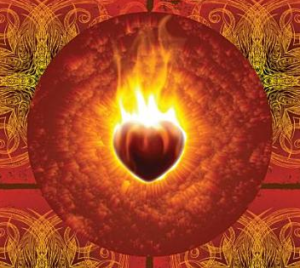
We attended to the heart, which as Cynthia Bourgeault teaches, is an “organ for spiritual perception.” As we put attention in the literal heart, we opened the spiritual heart, and integrated the emotional heart. We discussed the need to purify the passions, what the early Christians called the mental and emotional tendencies that keep us from deep prayer, and the “three poisons” of the Sufi tradition: envy, resentment and pride.
By investigating our own inner passions and poisons we would be able to find what gets the better of us and explore ways to be free from—and in—them as a way of further opening.
Through teaching and practice we investigated how heart is at the heart of all religions and how the heart is at the center of the human being.
By living from the heart, we are able to live from “the threshold between worlds,” integrating the horizontal plane of time and unique personhood with that of the vertical plane of timelessness and Spirit. The human fully alive is one who is able to rest in the heart, integrating the finite with the Infinite.
Matthew even spoke to how science is showing that the physical heart is proving to be more expansive and holds a larger energetic field than the human brain.
Very literally, the energetic field of our hearts are bumping up against one another every day. On retreat, during times of prayer and meditation, our hearts rested together.
Christian Wisdom
Early on in the retreat we began looking into the sacred practice of Jesus, who we are told had a routine: “Very early in the morning, while it was still dark, Jesus got up, left the house and went off to a solitary place, where he prayed” (Mark 1:35). Jesus acted as a classic contemplative by not escaping the world, but rather getting centered in infinite awareness before moving into the finite world.
We were also invited into the heart by way of integrating what the Greeks and early church called soma, psyche and Pneuma or body, mind and Spirit. 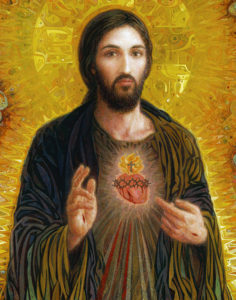
Perhaps you or I have a particular bent or fixation on one of these integral dimensions of self. Many in our culture certainly love and attend to the body. Excessive focus on body often leads to the lack of nourishment of the spirit, leading further to spiritual poverty (but not the way Jesus spoke of spiritual poverty). Alternatively one may neglect the body and excessively fill the spirit by way of excessive prayer and meditation.
Regardless of our preferences or blind spots, the weekend’s invitation was into integration and alignment—the process of honoring each of these integral parts of our being by intentional practice. We weren’t giving attention to one and not the other, but rather bringing them all “online” and using them in their proper way.
Soma, or body, psyche, or soul, and Pneuma, Spirit, were all meant to be brought into sweet harmony so as to be in integrity with the entirety of our being and in so doing, opening to the Heart.
Conscious Work
One method of integration was our group practice of conscious work. By mid morning, we had broken up into small groups of four to five and given simple tasks like stacking wood, raking leaves or weeding the garden.
We worked as a silent collective, communicating with words only when necessary. In the conscious work we were invited to hold the inner task of staying open and attuned to the Heart.
 We did this by practicing presence by attending to sensation in the body. How is my body feeling? Stay in the heart, stay in Presence.
We did this by practicing presence by attending to sensation in the body. How is my body feeling? Stay in the heart, stay in Presence.
Throughout the hour of work, Laura would make her rounds to sound a bell at which point we were instructed to pause as we were, and feel the physical sensations present. This simple practice, allowed for a reminder to be here now—and not only that—but to be here from the heart.
I had the pleasure of stacking wood with Matthew. During this time I would pass wood from the pile on the ground to Matthew who organized it in a shed. This was a special invitation into shared presence, shared sensation and shared heart.
As I felt the hardness of the wood by hand, and the beauty of each unique piece by sight, I passed to Matthew a similar sensation. From my hands to his, sensation here, sensation there. Shared Presence.
Wisdom Teachers
Throughout the day’s two major teaching sessions, we learned from various Wisdom Teachers.
We learned from the Russian Orthodox priest and monk, Theophane the Recluse. 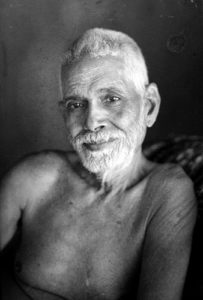 We then moved to the famous Sufi mystic, Jalaluddin Rumi and finally on to the Advaita Vedanta master, Sri Ramana Maharshi.
We then moved to the famous Sufi mystic, Jalaluddin Rumi and finally on to the Advaita Vedanta master, Sri Ramana Maharshi.
We found that each of the sacred traditions put special emphasis on “heart.” For example, Heart for Sri Ramana was synonymous with the words God, Guru, and Self.
Regardless of the tradition or religion, all the contemplative teachings seemed to point to heart as the center of the human person, and the doorway between two worlds. On one side the finite, the human, the earth and the other the infinite, the divine and the heavenly. To live from the heart, these traditions teach, is to be in both worlds.
As Rumi writes, “You are not just a drop in the ocean, you are the mighty ocean in the drop.”
Objectless Love
A special conversation opened as we discussed Cynthia Bourgeault’s notion of objectless awareness, and the dropping out of “I” in deep prayer and meditation.  To sink into the spiritual heart opens one to a love without object—the space of “recognizing” God, not as an object of devotion but the source and Ultimate Subject of love itself.
To sink into the spiritual heart opens one to a love without object—the space of “recognizing” God, not as an object of devotion but the source and Ultimate Subject of love itself.
God is not so much a thing to be in relationship to, but the space and relationality itself. God isn’t a “thing” to love, but the process and basic fact of love.
In heartful objectless awareness we may experience Love Loving Love, or as Thomas Keating points us to, “the place to which we are going is one in which the knower, the knowing, and that which is known is all one.”
Matthew mentioned briefly a short meditation practice which I will never forget:
First, begin by repeating “I love you, I love you, I love you.”
At some point, drop you: “I love, I love, I love, I love.”
Finally, drop I: “Love, Love, Love, Love, Love”
Slowly but surely, the subject-object relationship of the egoic operating system may come to rest, temporarily dissolving the finite mind of “me” and sinking the mind into the heart where all is perceived as and from oneness. Love.
There is no longer subject-I loving object-you.
The Lover is Loving Love.
Heart In Community
A common chant sung throughout the weekend went: “Slowly blooms the rose within.” This short chant was inspired by a poem from Hafiz:
How did the rose ever open its heart
And give to this world all of its beauty?
It felt the encouragement of light against its being,
Otherwise we all remain too frightened.
In this simple poem, I learned the power of not only opening my own heart, but how the openness of an other impacts me. In the openness of another, in the “shining” of another, I open. It was as if the beating heart and love of another warmed my own inner light, allowing me to cultivate and tend to the fire within.
Chanting “slowly blooms the rose within,” was an invitation not only to my inner being, but to all inner beings to bloom and blossom to our full potential. Together, as we bloom, we encourage others to do the same. As our heart starts to shine, it warms the heart of the “other” to slowly bloom themselves.
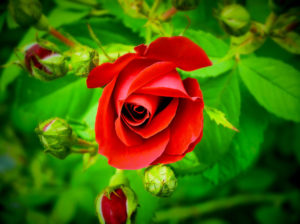 I found a real sacredness in this shared blooming. It wasn’t about me and “my spiritual journey” so much as it was about coming together as a sacred family, as one rose bush, opening together in God.
I found a real sacredness in this shared blooming. It wasn’t about me and “my spiritual journey” so much as it was about coming together as a sacred family, as one rose bush, opening together in God.
If I was able to adequately bloom, open, and attend to the heart, I came to the place of open, transparent personhood, grounded in “my” preexisting union with God and all things.
Keith Kristich lives in Buffalo, NY where he teaches meditation, contemplative prayer and the Enneagram of personality. As a lover of spirituality and world religions, Keith seeks to help people slow down and connect with their deep self and the divine within. You can find more about Keith’s work at https://www.keithkristich.com/


Ross Drago-I am interested in non-dual teachings and gatherings.
Hello, My partner Ross and I are interested in nondualwisdom teachings. We live in Buffalo NY.
Do you have an organization or group meditations or a spiritual inquiry group? we are interested.Thank you.
Surja Jessup 510-502-7942 Ross Drago 510-420-1713
or email devasurja@gmail.com
Thanks for sharing this!
Love – the Rumi poem, and meditation practice.